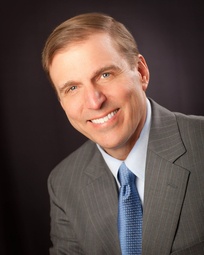
Stop the Bending of Behavior Through Leadership Transparency
Today's news is blanketed with stories of athletes, politicians and leaders who have bent the boundaries of behavior.
Take, for example, the issues plaguing the NFL and some of its superstars, including Baltimore Ravens running back Ray Rice and Minnesota Vikings running back Adrian Peterson.They're not being criticized for their skills or competencies — rather, they are being held accountable for their behaviors.
We hire for skill ... we fire for behavior.
As an executive coach working with top-level leaders, I often hear direct reports from colleagues, peers and customers say to me, “They’ll never change!” These key people are not referring to the skills of leadership — they are referring to the behaviors of leadership.
After many years of working with leaders behind closed doors on behavioral change, I have finally discovered change occurs only when those executive doors are opened wide and leadership transparency shows up!
What is the cost to your organization, both financially and emotionally, if change doesn’t happen at the top? Behavioral change?
Think about it: Who has left the organization, or transferred to another department, or comes to work but has already retired because of poor behaviors within your leadership?
It's estimated that, when you lose a key employee at the top of the organization, the cost is between two and three times their annual salary in replacement costs.
Costs include damage to existing customers, employees and your brand. You have to go out and find, train and develop their replacements.
What is this costing you emotionally if this person is one of your top direct reports? Are you able to focus your attention on what you have been hired to do? What is the cost to you as the CEO of your organization?
Here is the recipe for "Change that Sticks":
- Identify behaviors that needs to change.
- Identify five to seven "key influencers" — those people who will support, challenge, give open and honest feedback and make a change for themselves.
- Apologize for all past behavior that's had an adverse impact on relationships. This one exercise will do more for building back the relationship than almost anything else he/she will do. It has to be specific and sincere!
- Ask "key influencers" for one to two tips on how to get better at becoming more patient, more positive, a better listener, etc. Just pick one behavior to change.
- Once you've collected all the tips/suggestions, narrow it down to one to two actions. Some examples would be mastering the art of listening.
- Let go of the past: Focusing on past behaviors will not allow anyone to move forward. Figure out any old kernels between the teeth and floss them out with open and honest conversation.
- Support and encourage: Ask key influencers to support and encourage you when they see you doing right. "Hey Fred, I observed you summarizing and not interrupting in our last senior partners meeting. I was more engaged in the agreed upon outcomes. Thank you!"
- Open and honest feedback: Tell each key influencer you will be asking for open and honest feedback every 30 days for nine months. Feedback that is very specific to the behavioral change. Tell them you don’t want generic feedback, but rather very specific suggestions.
- Make change yourself: Ask each of your five to seven key influencers to make a behavioral change themselves. This is key to "Change That Sticks." If you have five to seven key influencers offering feedback every 30 days while also making change themselves, change will happen!
Change happens when the employee/leader is able to identify the necessary behavioral change. That is the first step!
It’s OK if that isn’t the same change you and others feel they need to change.
Feel free to run a OD/360 feedback report, available through TTI Success Insights, or hire a coach to interview the employees to help your top leader know what’s working and what’s not working.
But, at the end of the day, employees will only change what they feel like changing.



